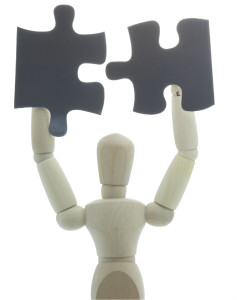 I had my profile made by Warren Lamb almost forty years ago. So I think I’ve learned a bit about making use of the information in the profile.
I had my profile made by Warren Lamb almost forty years ago. So I think I’ve learned a bit about making use of the information in the profile.
In an earlier blog I noted that movement is a process of change. I can also say that learning to use your movement profile involves change. There are several distinct phases.
Phase 1: You want to be 100 percent in every facet of decision making.
The relative magnitude of the different effort and shape elements in an individual’s repertoire comprise the movement pattern. Consequently, the six key decision-making elements (which are related to these various efforts and shapes) are represented in percentages that sum up to 100%. We all want to believe that we handle every aspect of decision making equally well. But in fact, we apply different amounts of time and energy to different parts of the decision making process. This makes each of us unique, and gives us a distinctive decision-making style.
Phase 2: Surprise.
After admitting that perhaps we do not devote the same amount of time and energy to every facet of decision making, we are often surprised to find that we have strengths we take for granted and that we are not particularly motivated to apply ourselves to certain other parts of the decision making process.
Phase 3: Testing your pattern experientially.
The profile provides a new way to think about what you do and how you do it. This necessitates reflecting on your behavior, contrasting your approach to what you perceive others doing, and bringing self perception and the language of the profile into some kind of relationship.
Phase 4: Using your profile.
Awareness and self-acceptance changes everything. It becomes possible to position oneself to draw on strengths, to avoid situations that are likely to become stressful, and to appreciate and use the strengths of others to complement your own pattern.
Find out more about your own pattern at the Embodied Decision Making course.
